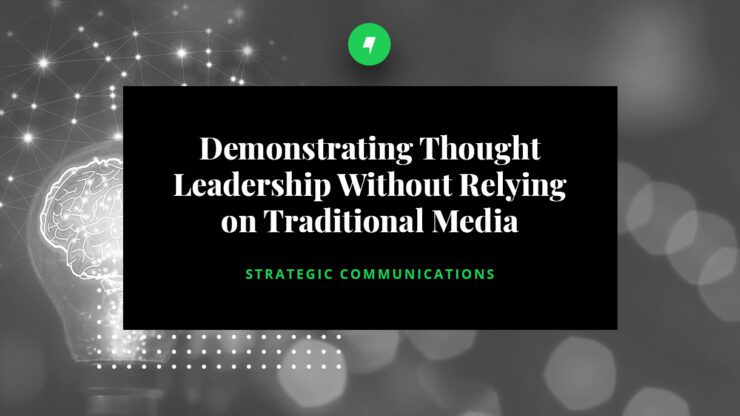Demonstrating thought leadership is a core component of any comprehensive public relations strategy. While this goal is often achieved through media relations, there are several ways to position organizations and subject matter experts (SME) without relying on earned media.
In fact, in some instances – for example, the media landscape is too crowded, retaining full control over the message is important, or press just aren’t interested – exploring different avenues can be even more efficient than media coverage.
Below are just a few ways we work with clients to provide industry commentary, discuss new or emerging industry trends, and ultimately showcase a SME’s unique expertise without relying on press:
Utilizing Your Social Presence
It goes without saying that social media is an important tool for thought leadership, with both LinkedIn and Twitter serving critical, yet slightly different, functions.
LinkedIn is a great way to engage with new and prospective clients by sharing industry news and analysis, thoughtfully commenting on content from connections, and becoming involved in industry networking groups on the platform.
Twitter specifically is designed for users to share real time thoughts with their followers. The most skilled SMEs utilize Twitter to share commentary on breaking news and consistently engage with industry peers. While this blog post isn’t focused on thought leadership via traditional media, Twitter can do both. Regularly sharing content and engaging with key reporters can help SMEs develop relationships with media in their field. In fact, PEW Research Center found that the majority of journalists (69%) cited Twitter as the most used social media site in their job.
Writing for LinkedIn
LinkedIn Publisher is often an undervalued and underutilized tool, which essentially works as a live-in blog platform. Through Publisher, SMEs can publish long-form articles and share them directly on their page.
The functionality offers several advantages, including helping SMEs get in front of existing audiences since connections are notified whenever you publish content, as well as potentially reaching new audiences by including hashtags and through LinkedIn’s search function. As a bonus, publishing via LinkedIn is good for SEO and searchability.
Maximizing Company Channels
Don’t count out your company blog as another valuable marketing tactic. Publishing content through your organization provides additional fodder for you to share on social media, can help drive traffic to your individual bio, improves your company’s SEO, and can help you generate leads.
Leveraging Industry Associations
Are you involved in any professional organizations or industry networking groups? Most associations encourage member engagement and want to provide helpful resources and content to their membership base. Associations may be willing to share your content through their social channels, newsletters, or even by having you author a guest blog post for their website.
Remember, traditional media relations is just one piece of the PR puzzle. Putting the time and effort into leveraging owned channels, social media, and non-traditional outlets can be just as effective in positioning subject matter experts. Plus, if media coverage is still a goal, reporters are more likely to speak with experts who are clearly active in the industry and thoughtfully showcase their unique knowledge.
For additional information on maximizing social media and thought leadership, check out my posts LinkedIn For Business Development: Features You Might Not Know About and Leveraging Thought Leadership Coverage.
Posted In Public Relations
 Emily White
Emily White 